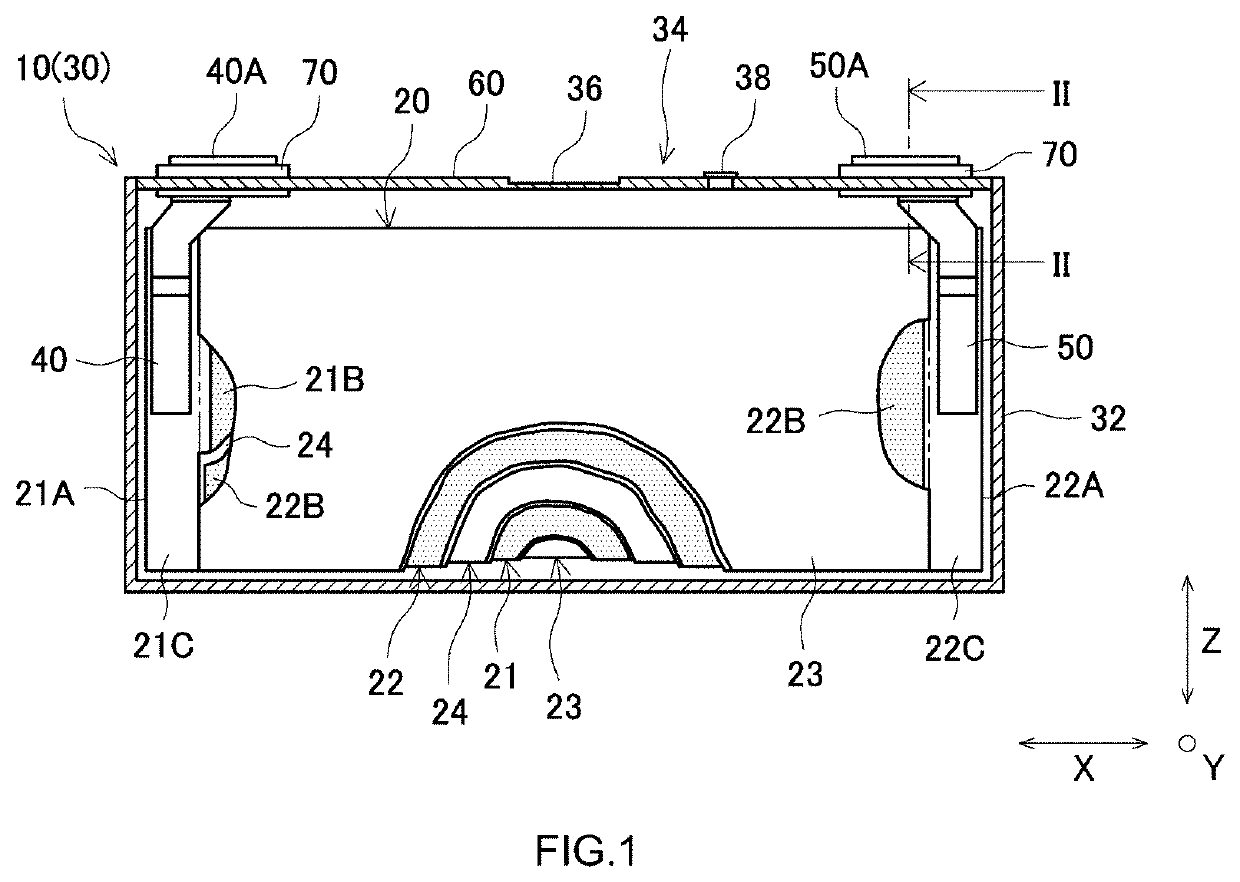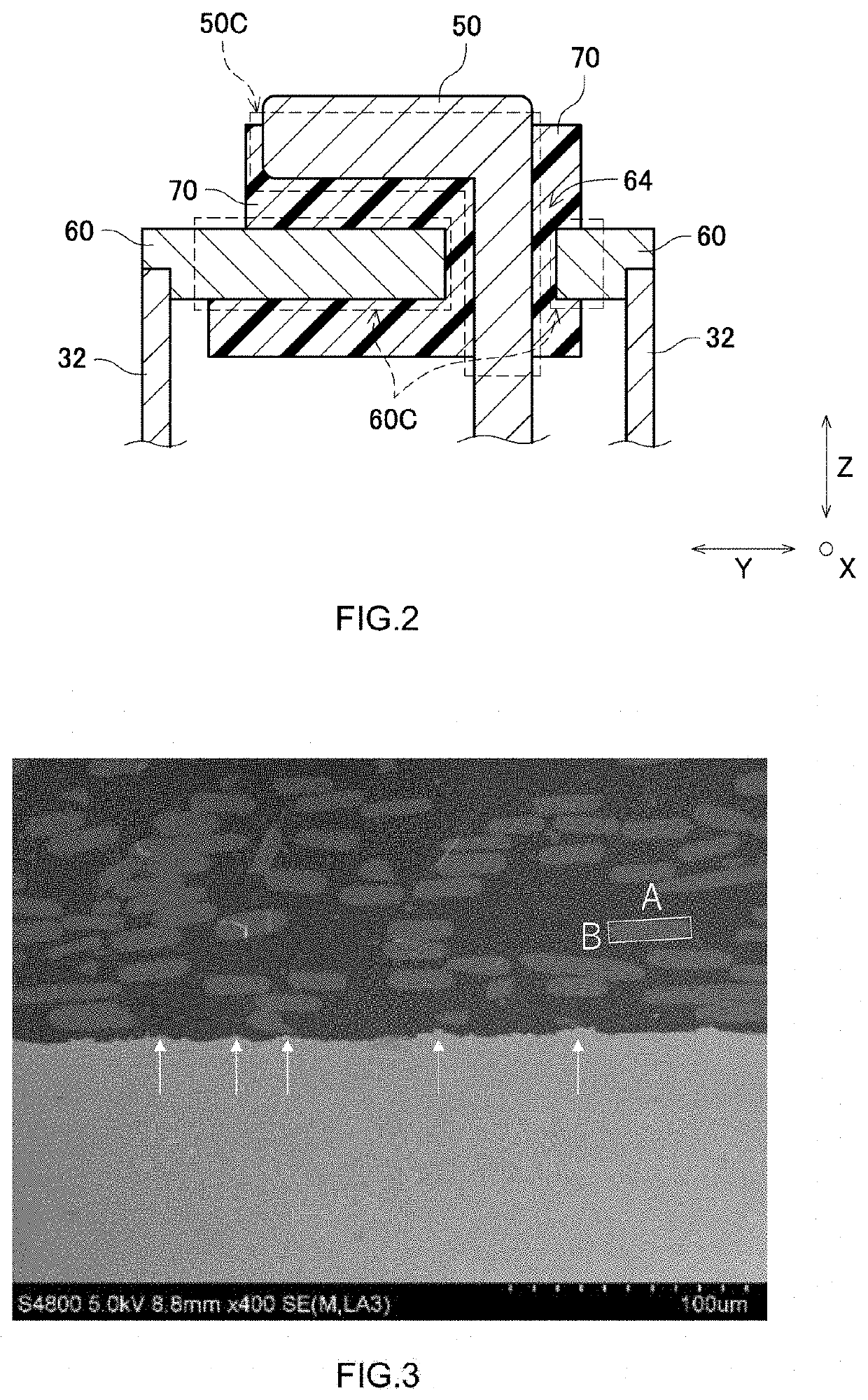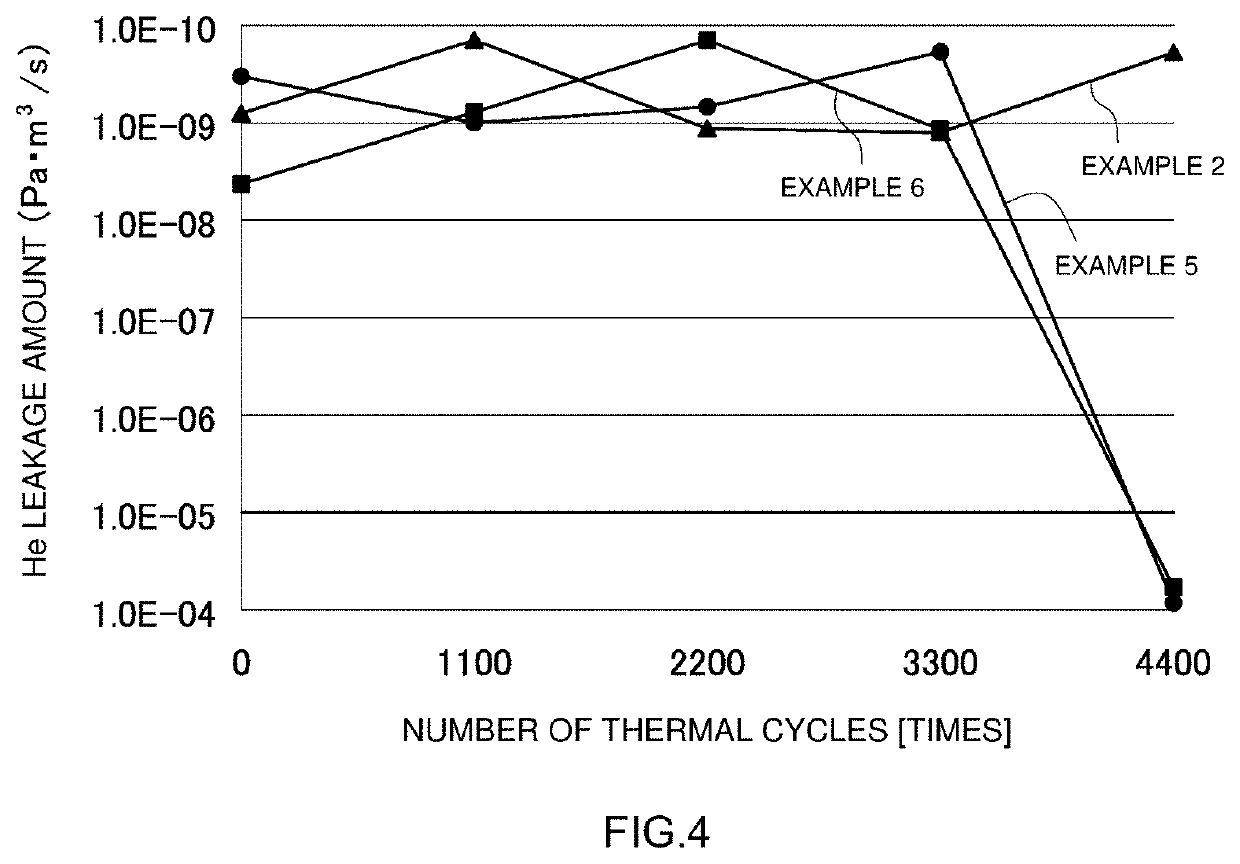Lid body and sealed battery
a technology of sealed batteries and lids, applied in the direction of cell sealing materials, cell components, electrical equipment, etc., can solve the problems of difficult to prevent peeling at the joint surface of sealing materials and terminals, and the battery performance is affected
- Summary
- Abstract
- Description
- Claims
- Application Information
AI Technical Summary
Benefits of technology
Problems solved by technology
Method used
Image
Examples
example 1 to example 5
[0063]Herein PPS (polyphenylene sulfide) and glass fibers having an average aspect ratio of 2 were prepared to a ratio by weight of the foregoing of PPS:glass fibers=80:20. Then PPS was melted at 330° C., and was mixed with an inorganic filler, to prepare an injection molding material.
[0064]There were prepared a 50 mm×50 mm×3 mm test pieces made of aluminum, and having a φ8 mm through-hole in the center. One of the surfaces of each test piece was subjected to a surface roughening treatment by laser irradiation.
[0065]A mold was prepared, for the surface of the test piece having undergone the surface roughening treatment, such that the through-hole of the test piece was plugged and such that a φ16 mm×3 mm injection molded body could be molded at the center of the test piece. The test piece was then placed in the mold.
[0066]A test molding material at 330° C. was filled in while modifying in various ways the injection rate in the mold.
[0067]Once the test molding material had cooled and ...
example 6
[0068]Test sample example 6 was produced in the same way as in Example 4 but using herein glass fibers having an average aspect ratio of 1.6 as the glass fibers mixed with PPS.
[0069]Measurement of the Average Orientation Angle
[0070]The produced Test sample examples 1 to 6 were subjected to cross-sectional SEM observation, and the respective average orientation angles were measured in accordance with the above-described method. The results are given in Table 1.
TABLE 1Average orientationThermal cyclingTest sampleangleAverage aspect ratioresistanceExample 1 5°2GoodExample 215°2GoodExample 320°2GoodExample 430°2GoodExample 540°2PoorExample 630°1.6Poor
[0071]Thermal Cycling Test
[0072]Thermal cycling from −65° C. to 120° C. was carried out, over 5500 cycles, for Test sample examples 1 to 6.
PUM
| Property | Measurement | Unit |
|---|---|---|
| orientation angle | aaaaa | aaaaa |
| aspect ratio | aaaaa | aaaaa |
| average aspect ratio | aaaaa | aaaaa |
Abstract
Description
Claims
Application Information
 Login to View More
Login to View More - R&D
- Intellectual Property
- Life Sciences
- Materials
- Tech Scout
- Unparalleled Data Quality
- Higher Quality Content
- 60% Fewer Hallucinations
Browse by: Latest US Patents, China's latest patents, Technical Efficacy Thesaurus, Application Domain, Technology Topic, Popular Technical Reports.
© 2025 PatSnap. All rights reserved.Legal|Privacy policy|Modern Slavery Act Transparency Statement|Sitemap|About US| Contact US: help@patsnap.com



